I’ve run my miles and the Nike Pegasus 37 performance review is ready. Will my final judgement match my first impression? Short answer: yes and no. I used the Pegasus 37 across varied conditions and workouts. I also spoke with several other runners who purchased and in the Pegasus 37. Read on for all the details.
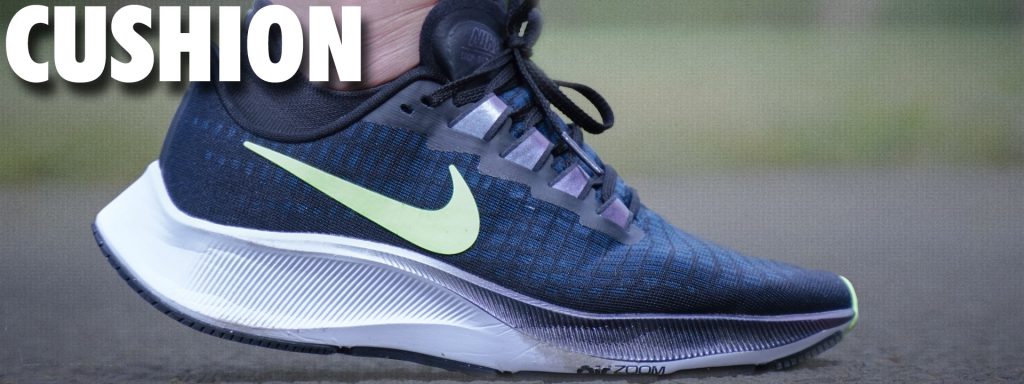
Cushion
Let’s start here because it’s the biggest change between the Pegasus 36 and Pegasus 37. Nike dropped the 4mm full length zoom air bag and Cushlon ST midsole used in the 35/36 and replaced them with a top-loaded, articulated 10mm zoom bag and a full-length React midsole. The end result is one of the bounciest forefoots I’ve ever felt in a running shoe. This size zoom bag is typically used in basketball shoes (like the Jordan Why Not Zero.3) where the extra bounce is helpful with all the jumping and cutting. Nike tuned the male and female versions of the zoom bag differently (20 PSI for the men and 15 PSI for the women), but both genders experience the bounce.
If you’re a forefoot runner and want bounce on your daily runs, your search is over. If you’re a heel striker that likes React, you’ll also enjoy this setup. As for midfoot strikers (like myself), you may find the ride uneven. I loved the forefoot bounce, but landing in the middle between a huge bouncy zoom bag and the mushier React just never felt quite right. The full length React in the Nike React Infinity Run was a much smoother ride.
I enjoyed the Pegasus 37 a lot more when I got moving a little faster and was firmly on my toes. I didn’t like how Nike cored out the heel React (like they do often with Phylon and Cushlon heels). Most React shoes to-date have featured a flat non-cored heel and thus a bigger chunk of React. I feel a fuller, flatter heel would have made a difference in evening out the front and back cushioning. This is only a midfoot striker issue but something to think about if you fall into that group.
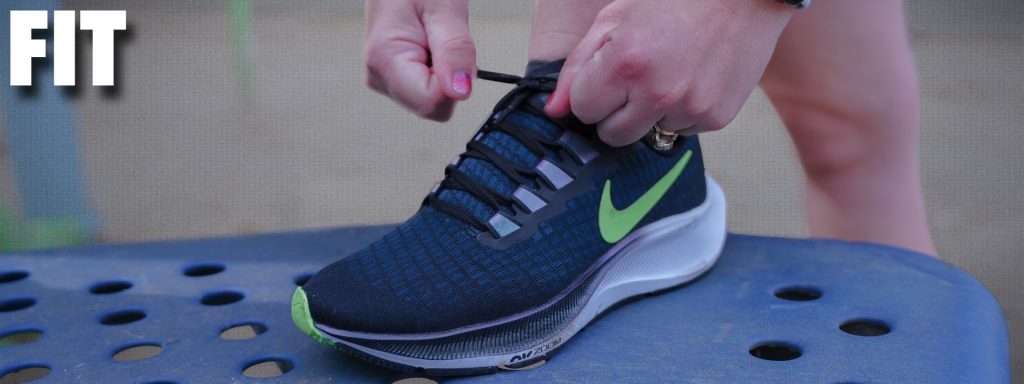
Fit
The Nike Pegasus 37 fits true to size but the engineered mesh upper is narrow. My narrow foot got a nice fit so it didn’t initially cross my mind. However, Chris and Jodi spent several minutes discussing the fit issues in their first impression video. Wide footers will have buy the wide version to get comfortable.
The shoe’s last (midsole shape) appears to be the same as previous models, but the upper has been narrowed and tightened. Perhaps this was done to provide more support to narrow footers. The Pegasus comes in wide versions for both men and women so Nike might be catering the upper even more to the various foot types. Hard to know the real reason for the change. The shoe is tightest just behind the ball of the foot and before the bottom of the laces. The upper is overly tight in this area and some foot shapes will see problems there.
As quarantine ends across the world, this is a shoe you’ll want to try on. And as always, you can take advantage of Nike’s return policy with several runs before deciding if the Pegasus 37 is for you.

Traction
While the outsole is slightly tweaked from the Pegasus 36, the Pegasus 37’s traction was fantastic in all conditions. The rubber compound is the same, but the main traction pattern now uses squares and rectangles vs the pentagons used on the Pegasus 36. There’s also a flex groove that snakes across the entire forefoot (instead of only the lateral side). I ran in a bunch of different conditions including on trails and in a huge driving rainstorm (my weather app said it wasn’t going to rain for another hour!). I never slipped or skated with the Pegasus 37.
And on top of that, the rubber is thick, hard, and durable. This is an outsole that won’t let you down and will last 300-500 miles.
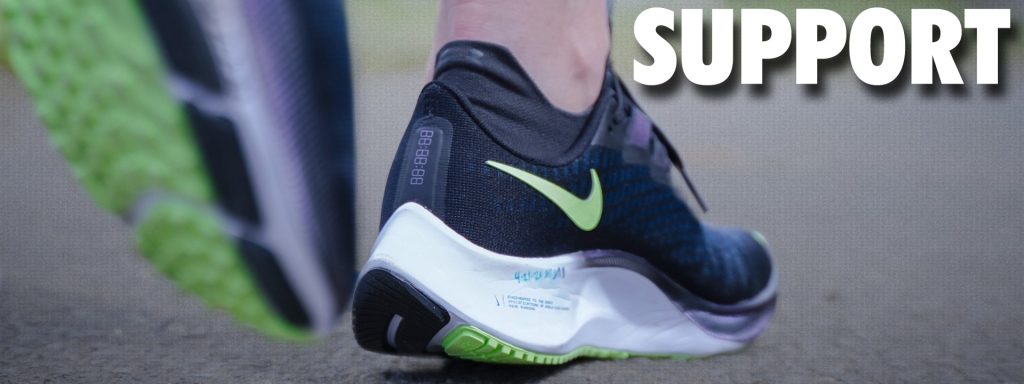
Support
The midfoot straps (sometimes called a dynamic fit cage) are connected to the lace loops at the top and the midsole at the bottom. They do most of the work in the support department. The cage like structure keeps your foot surrounded to help prevent rollovers and lock you down into the footbed. In addition, you sit slightly inside the midsole at the heel, there’s a standard heel counter, and a little bit extra achilles padding. The heel is a bit short. Several people I know had lockdown issues and experienced heel slip. They had to either tighten up the laces or use a runner’s loop to get the lockdown they wanted. It’s a fixable issue so as long as you dial in the right lace tightness you should stay firmly planted in the heel.
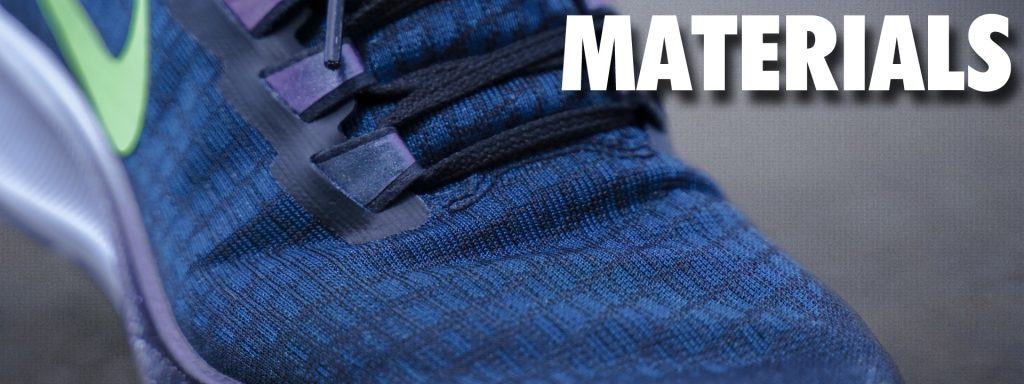
Materials
The Pegasus 37 continues with the Pegasus’ material of choice, engineered mesh. While the mesh is a slightly different pattern, it feels very similar to the uppers from the 35 and 36. Long time Pegasus fans get an upper they’re used to. Nike smartly didn’t mess with a good thing.
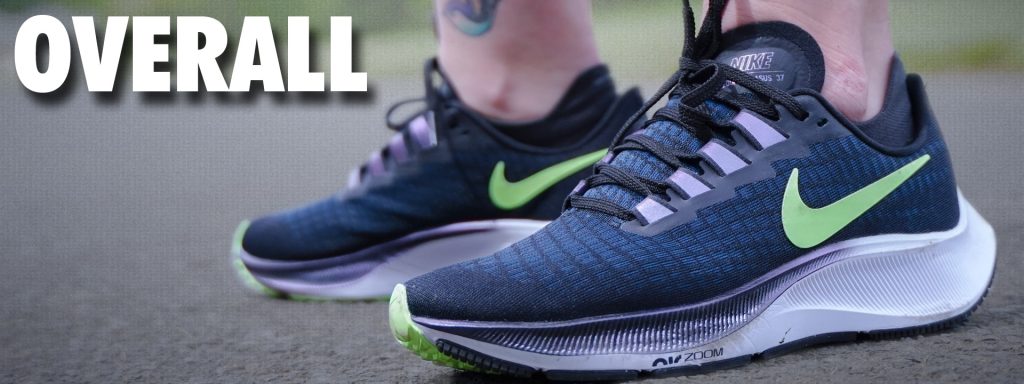
Overall
The Nike Pegasus 37 is, like the Pegasus line normally is, an incredibly versatile running shoe. If you’re someone that doesn’t buy different shoes for speed days, long runs, and racing, the Pegasus 37 is built for you. Just buy the wide version if you’ve got a wider foot and be prepared for a little unevenness in the cushioning if you’re a midfoot striker. Other that those two watch outs, the Pegasus 37 continues an ultra successful line with a shoe whose bouncy forefoot will make you smile during all those miles.
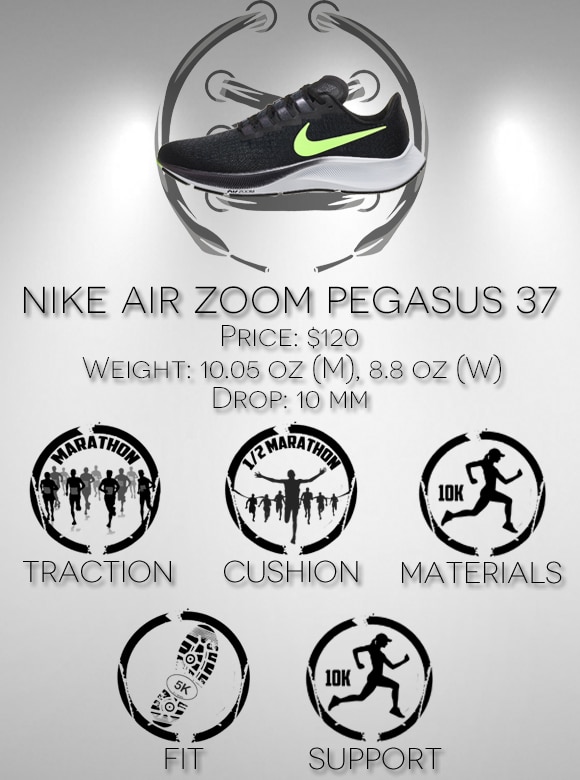
Thanks to Nike for sending pairs to test. Nike was not given any editorial control of the review. This review is based on our weartesters’ experiences using the shoes for speed workouts, trail runs, treadmill training, long runs, casual wear, and more.

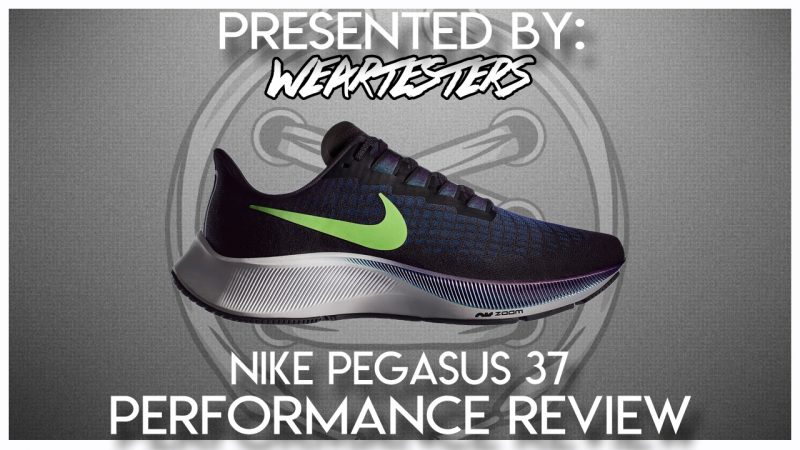
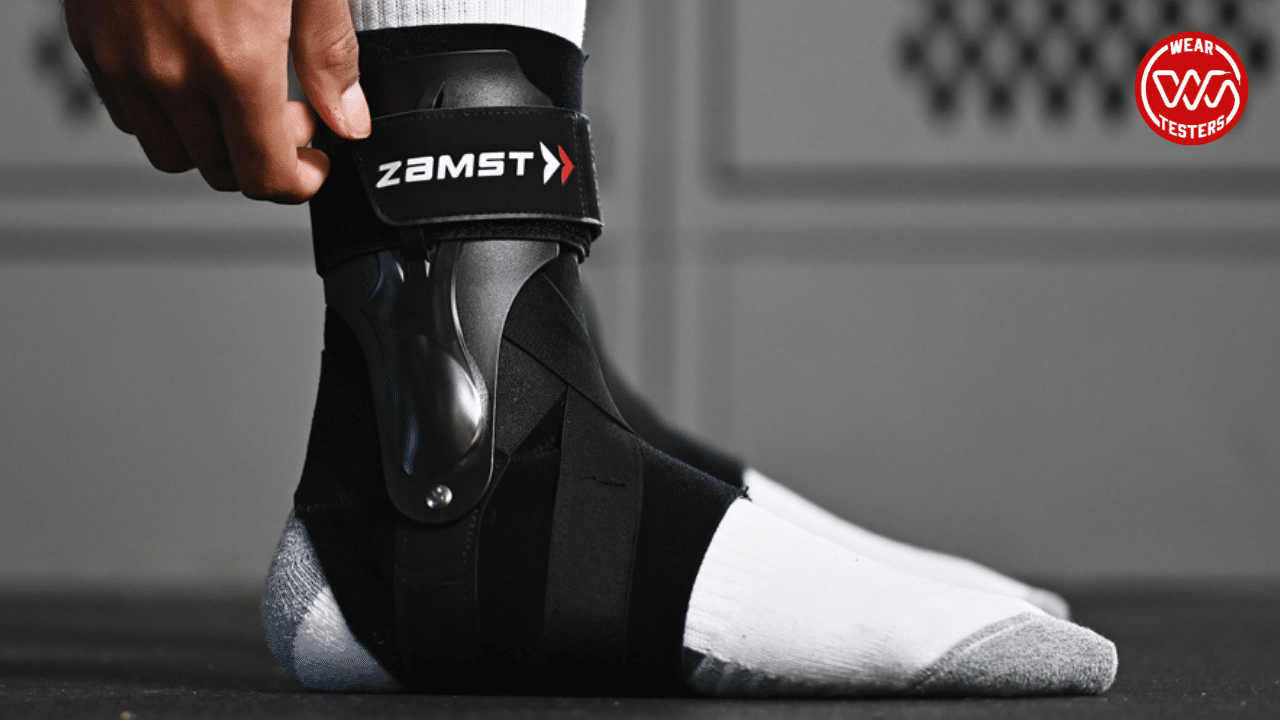
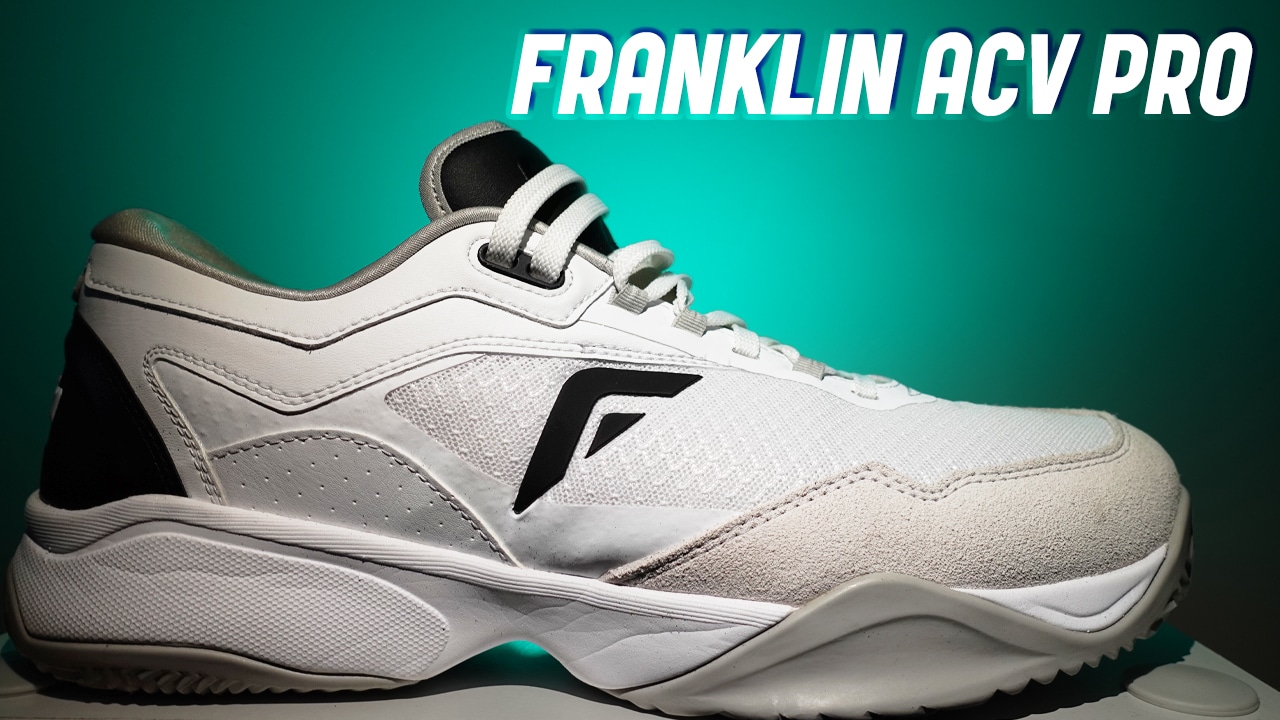
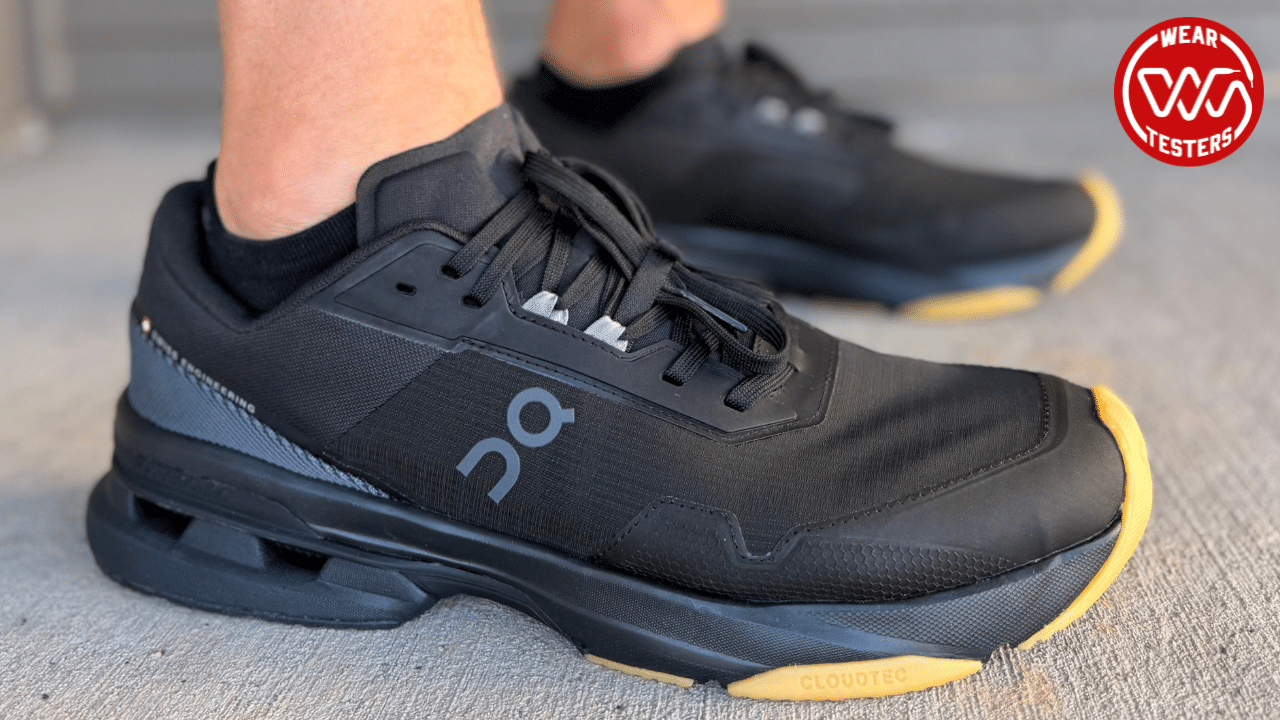
Are the weartesters actually getting close to 300-500 miles when they test the shoes? I’m at 1,122.6 miles on my Pegasus 36s and expect to get a few hundred more before relegation to dog walking. I wouldn’t take Nike’s word on the longevity of their shoes considering a bias towards selling more shoes.
If you’ve been around here long enough, you’ll know we don’t take their word on anything. 300-500 miles is an industry standard guide to how long a typical pair of running shoes should last. You can look up studies on foam breakdown timeframes that back this up. Some shoes last longer, some shorter. Someone who lands heavy will go through shoes a lot quicker than someone who is light on their feet.
We comment on the durability trends we observe during testing. Our testing period of 50ish miles typically reveals if a shoe is wearing faster, slower, or as expected.